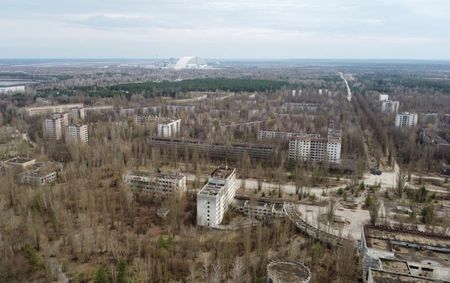Chernobyl 35 years on: New nuclear waste repository at site of the disaster that shook the world

This morning marks the day the world woke up after the worst nuclear accident in history 35 years ago. It is also the day Ukraine’s president unveiled a new nuclear waste repository at Chernobyl.
Ukrainian authorities decided to use the deserted zone around the Chernobyl plant to build a place where Ukraine could store its nuclear waste for the next 100 years.
Volodymyr Zelenskyy visited Chernobyl with Rafael Mariano Grossi, director general of the International Atomic Energy Agency, and vowed to “transform the exclusion zone, as Chernobyl is referred to, into a revival zone”.
Reactor number four
Reactor No 4 at the Chernobyl power plant, 65 miles north of Ukraine’s capital Kyiv, exploded and caught fire deep in the night on 26 April 1986, shattering the building and spewing radioactive material into the sky.
Soviet authorities made the catastrophe worse by failing to tell the public what had happened — although the nearby plant workers’ town of Pripyat was evacuated the next day, the two million residents of Kyiv were not informed despite the fallout danger.
The world learned of the disaster only after heightened radiation was detected in Sweden.
More than 600,000 people took part in fighting the consequences of the disaster, and 30 died on the first day.
Eventually, more than 100,000 people were evacuated from the vicinity and the 1,000-square-mile exclusion zone was established where the only activity was workers disposing of waste and tending to a hastily built sarcophagus covering the reactor.
Radiation continued to leak from the reactor building until 2019, when it was covered by an enormous arch-shaped shelter.